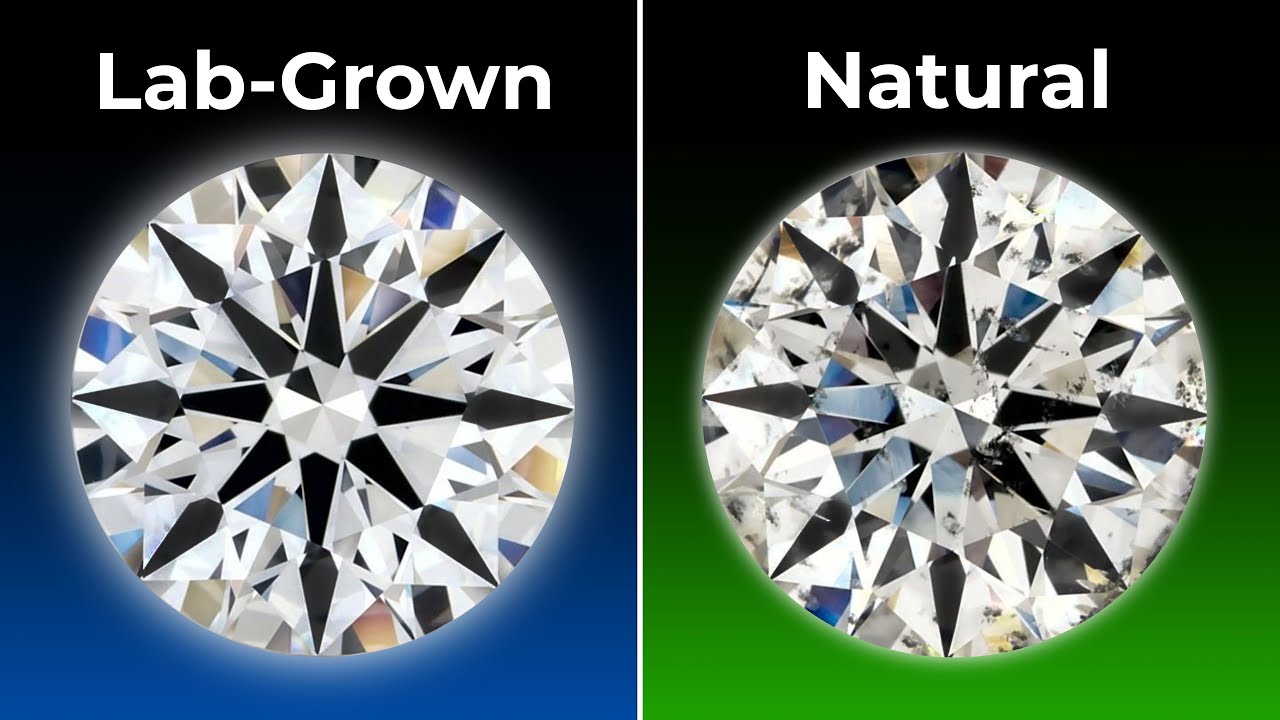
CVD Diamond vs. Natural Diamond Engagement Rings: A Comparison
Diamonds have long symbolized everlasting love and commitment when choosing the perfect engagement ring. Technological advancements and changing consumer preferences have introduced new players into the market: lab-grown diamonds, particularly those produced using Chemical Vapor Deposition (CVD) technology. This article explores the differences between CVD and natural diamonds for engagement rings, considering quality, ethics, and uniqueness.
Natural Diamonds: Timeless Beauty with a Story

Natural diamonds are formed deep In Earth's mantle over millions to billions of years under immense pressure and heat. Their formation involves carbon atoms arranged in a crystal lattice structure, resulting in the hardest naturally occurring substance known to man. This geological process gives natural diamonds unique characteristics. Each is a masterpiece of nature, with individual imperfections known as inclusions that can be seen as birthmarks, adding to their charm and rarity.
Quality and Value

Natural diamonds have been valued for their rarity and natural beauty. The 4Cs—cut, color, clarity, and carat weight—are used to evaluate their value. The cut determines how well the diamond reflects light; the color ranges from colorless to yellow or brown. The clarity measures the presence of internal flaws or inclusions, and the carat weight denotes the size of the diamond.
Ethical Considerations

One of the main concerns of natural diamonds is their ethical sourcing. Historically, diamond mining has been linked to indirect impacts such as human rights and environmental violations in some regions. Although efforts by the industry to implement ethical mining practices, including certification systems like the Kimberley Process, are targeted to ensure that diamonds are sourced responsibly and without supporting conflict,
Uniqueness and Rarity
Each natural diamond is unique due to its formation process, making it a one-of-a-kind gem. The imperfections or inclusions within a diamond can tell a story about its journey through the Earth's crust, making it a highly sentimental choice for an engagement ring. For many, the uniqueness and rarity of natural diamonds contribute significantly to their allure and value.
CVD Diamonds: Technological Innovation and Ethical Advantages
In contrast to natural diamonds, CVDs are grown in a laboratory setting using advanced technology that mimics the natural diamond formation process. CVD stands for Chemical Vapor Deposition, a method where carbon atoms are deposited on a substrate in a controlled environment, allowing for the growth of diamond crystals layer by layer.
Quality and Value
C.V.D diamonds are chemically and optically identical to natural diamonds because they share the same crystal structure. It is evaluated using the 4Cs, and high-quality CVD diamonds can be virtually indistinguishable from their natural counterparts. The controlled growth process often results in fewer inclusions, potentially yielding diamonds of exceptional clarity.
Ethical Considerations
One key advantage of CVD diamonds is their ethical sourcing. Since they are grown in a laboratory, there are no concerns about mining practices, environmental impact, or labor issues associated with their production. It makes CVD diamonds an attractive choice for consumers who prioritize ethical considerations in their purchasing decisions.
Uniqueness and Customization
While each CVD diamond is technically identical in structure, its availability and potential for customization offer unique advantages. C.V.D diamonds can be produced in various colors, including rare fancy colors like pink, blue, or yellow. Furthermore, they can be tailored to specific shapes and sizes, allowing greater flexibility in creating unique and personalized engagement rings.
Choosing the Perfect Engagement Ring
Several factors come into play when choosing between CVD and natural diamonds for an engagement ring. Traditionalists may value the history and rarity of natural diamonds, appreciating their unique imperfections as part of their allure. On the other hand, those looking for a more ethical and customizable option may find CVD diamonds compelling. Handmade Diamond Engagement Rings: Adding a Personal Touch
In addition to the type of diamond, the craftsmanship of the engagement ring itself plays a crucial role in its uniqueness and sentimental value. Handmade engagement rings, crafted by skilled artisans, offer a level of detail and personalization that mass-produced rings often need to improve. Whether set with a natural diamond or a CVD diamond, a handmade engagement ring can become a cherished heirloom, reflecting the personal tastes and preferences of the wearer.
Unique Handmade Engagement Rings: Standing Out from the Crowd
For couples seeking something unique, handmade engagement diamond rings provide an opportunity to create a piece of jewelry that is as special and individual as their love story. From intricate designs that incorporate symbolic elements to unconventional settings that highlight the diamond's beauty, handmade rings offer endless possibilities for customization. Conclusion
Both options have their merits in the debate between CVD diamonds and natural diamonds for engagement rings. Natural diamonds appeal to those who appreciate their geological rarity and historical significance, while CVD diamonds offer a more ethical and potentially customizable alternative. Ultimately, the choice between the two depends on personal preferences regarding ethics, aesthetics, and sentimental value. Whether set in a traditional natural diamond or a cutting-edge CVD diamond, the perfect engagement ring symbolizes enduring love and commitment, chosen with care to mark a significant moment in a couple's journey together.
Share






